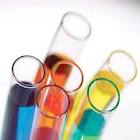Comparison of Sieve analyses, laser diffraction, image analyses and FBRM for the determination of particle size distributions part 2
Monday, January 9th, 2012 4:09:18 by Ahmed Tariq
Comparison of Sieve analyses, laser diffraction, image analyses and FBRM for the determination of particle size distributions part 2
LD estimates volume-based PSD by measuring the forward light-scattering (diffraction) of light from the laser. It is one of the most widely used techniques because of its range of applicability, ease of implementation, broad dynamic range, high reproducibility
and speed of measurement (Blott et al., 2006; Li et al., 2005; Tinke et al., 2008).
However, a significant challenge in applying LD for on-line particle size measurement is to accomm- odate the multiple scattering that takes place at the high particle concentrations encountered in some processes (Malvern Instruments Ltd)
A large community of users successfully applies FBRM technology for monitoring, fault detection, and quality control of dynamic processes (Kail et al., 2009). The operating principle of FBRM is shown in Figure 1. The measurement principle of FBRM is based
on backward light scattering. It uses a focused beam of laser light that scans across a particle passing in front of the probe window to take measurement.
When the laser beam intersects the edge of a particle, some of it backscatters to the detector installed in the same probe, and generates a rise in signal in the circuit until it reaches the opposite edge of the particle. The product of rise-time and tangential
velocity of the rotating laser beam records the chord length; straight line between two points on the edge of a particle (Yu et al., 2008).
The instrument has benefits for on-line and in-situ measurements in systems with high solid concentrations (Hobbel et al, 1991). However, it is complicated to transform a measured CLD into its corresponding PSD accurately due to the lack of a theoretical
analysis of the measurement principle. Empirical correlations between a measured CLD and moments of the PSD are often used (Li et al., 2005).
IA is a technique by which a few particles are captured, digitized into a pixel image and then processed so that information can be extracted in the form of PSD. (Mora et al., 1998). IA can supply particle shape informa- tion and it can also be used to take
on-line images. However, a significant number of particle images must be taken to generate good results, which can be time-consuming.
Many research articles have reported the comparing of varies techniques for PSD measurement using different particles (Hareland, 1994; Linda et al., 2006; Joanne and Fernlund, 1997). Nathalie and Bougeard (1993) compa- red SA measurements of raw material
used in foodstuff with those obtained using LD and found considerable discrepancies between the two methods which is attributable to the uncertainty of particle shape factors of different type of particles (fine, medium, coarse).
As pointed out by Eshel et al. (2004), the lack of agreement between techniques could also be due to several sources of error, inherent to the design of different techniques. There is therefore considerable impetus to further study the effect of particle
shape on PSD and compare the results obtained from each technique.
The aim of this work is to compare PSDs measured by different techniques and to assess the effect of particle shape on measured PSD results. To engineer this goal, four measurement techniques, including: (1) Image Analyses, (2) Laser Diffraction, (3) FBRM
and (4) Sieve Analyses, were used.
Continued in part 3
Tags: Comparison, FBRM, image analyses, laser diffraction, October 2012, Science, Sieve analyses, Swiss authorities, technology, The Italian JobShort URL: https://www.newspakistan.pk/?p=8566

















